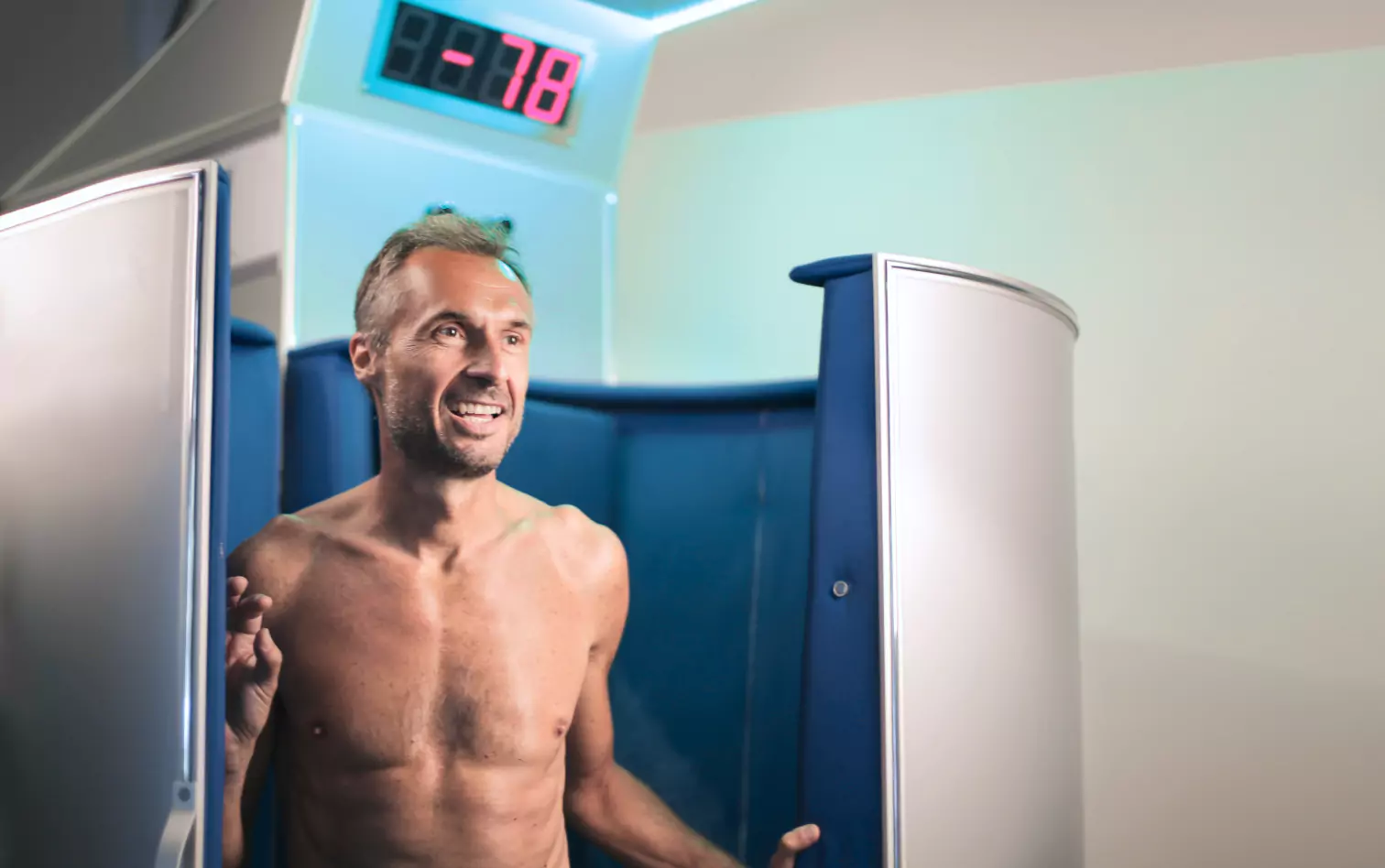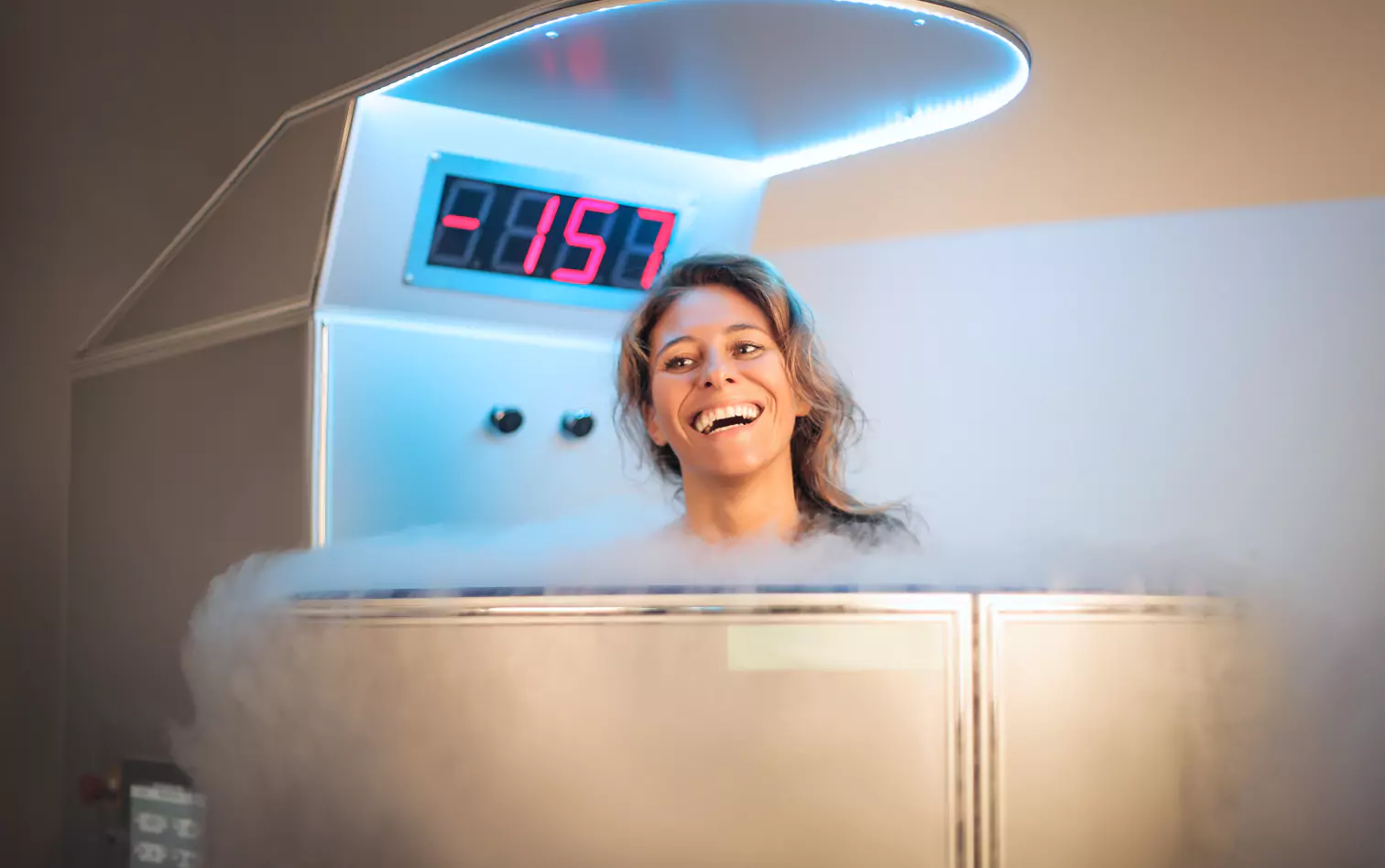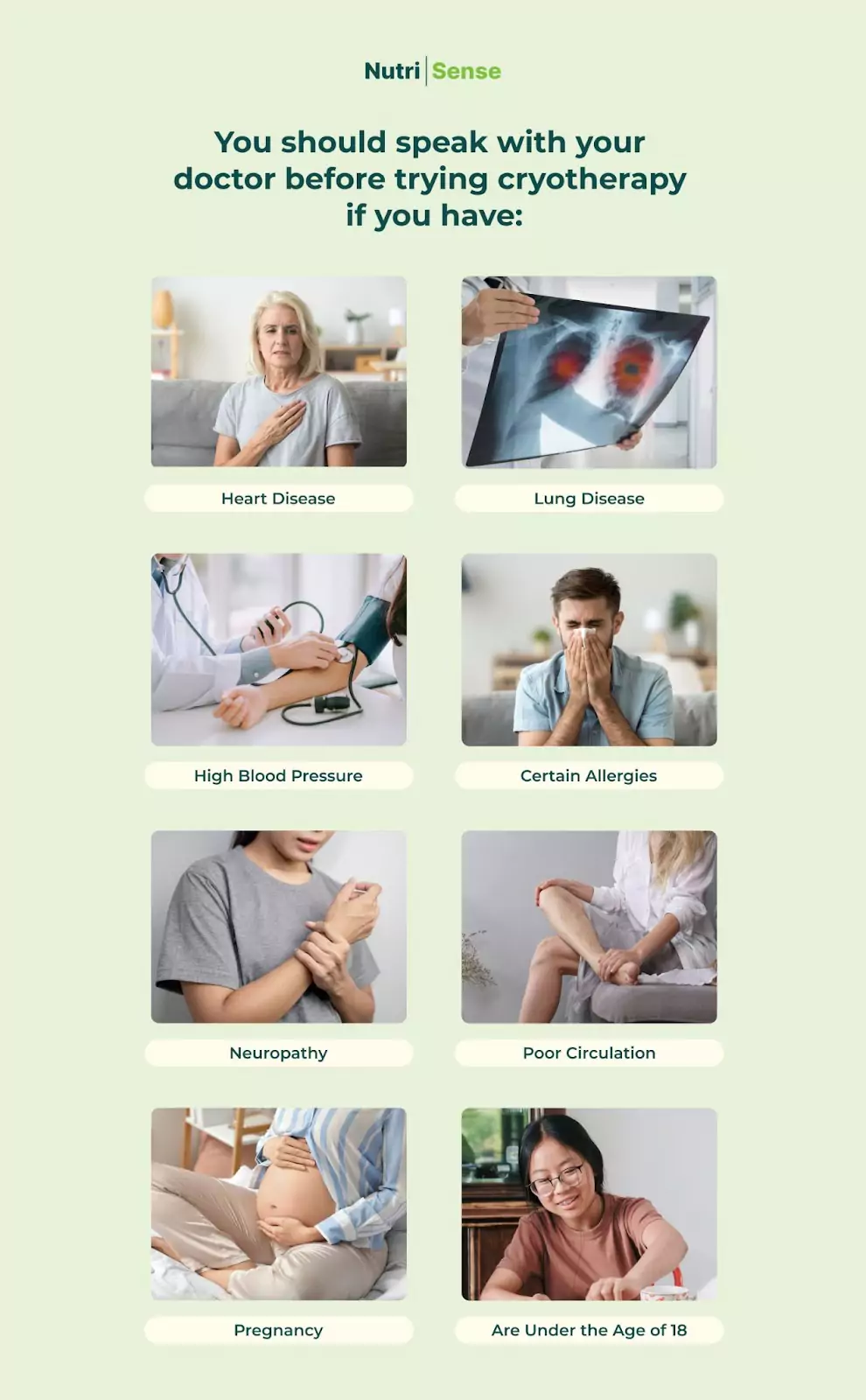
A sudden obsession with a particularly odd-sounding treatment is sweeping the alternative therapy world, and it involves exposing your body to extremely cold temperatures. From Jennifer Aniston to Cristiano Ronaldo, this cold therapy is popular with film stars and athletes alike, promising to boost wellness and endorphins and reduce injuries and chronic pain. But does exposing your body to low temperatures provide the pain relief and benefits it promises?
As we’ve mentioned, the treatment exposes your body to extreme cold to reduce issues like inflammation and chronic pain. It’s promised to be effective at easing arthritis and muscle soreness and helping with weight loss. You’ve probably seen it in the news, on social media, and marketed in your neighborhood gym. The cryotherapy machine has become standard equipment for many fitness enthusiasts who want to improve their health and weight loss goals.
So, how does it work? And what’s so great about it anyway?
Understanding the Basics of Cryotherapy

Cryotherapy is a treatment that uses extreme cold to lower your body temperature and freeze and destroy harmful tissues. There are many different types of cryotherapy. They’re all based on forms of cold therapy that are not uncommon in the wellness world—think of simple things like using an ice pack on an injury!
Cryotherapy can be a whole-body treatment or on localized areas of your body. Doctors can even use it as an internal treatment to fight harmful tissues. It’s said to decrease inflammation and help treat disease, skin conditions, and muscle recovery. Here’s some information about each type:
Whole-Body Cryotherapy

When people refer to cryotherapy, they’re likely typically talking about whole-body cryotherapy or WBC. It’s a short two to three and a half minute treatment, where you expose your body to extreme cold in a cryo-chamber.
The cryo-chamber usually has liquid nitrogen that cools the air to subzero temperatures, helping to expose your body to the extreme cold. It’s generally a treatment for joint and muscle pain, stress, and inflammation. It’s also a type of therapy for healthy skin and good mental health.
When you enter a cryotherapy chamber, it will stimulate your body with extremely cold temperatures. It puts your body into a state of shock, kickstarting its self-repair process.
Whole-body cryotherapy clinics are available to the public, and you don’t need any prescriptions to indulge. It’s considered to be relatively safe, but you should consult with a healthcare professional first to ensure that it’s a good fit for your body and your unique needs.
Localized Cryotherapy
Only healthcare professionals can administer localized cryotherapy. Your doctor may decide to use liquid nitrogen, argon gas, or liquid nitrous oxide to administer external cryotherapy treatments.
They will use a cryoprobe inserted through a small incision in your skin to administer internal cryotherapy treatments. Since your cells and tissue can’t handle such extreme cold, they will die after the treatment.
Internal Cryotherapy
Internal cryotherapy treats conditions inside your body by using a probe to apply extreme cold to your tissues. The probe is usually applied by making a small incision in the skin and inserting it.
Internal cryotherapy is used to treat precancerous cells, tumors, cervical cancer, liver cancer, prostate cancer, and bone cancer. A registered healthcare provider is the only one who can administer this type of cryotherapy. Your doctor will likely administer local anesthetics to the area and may even administer general anesthesia if the treatment requires it.
The Lowdown on Cryotherapy Treatments

As with many alternative medicines and treatments, cryotherapy has its critics and supporters. Its supporters point to its many potential health benefits, including effectiveness in minimizing muscle pain, joint pain, and chronic pain associated with medical conditions like rheumatoid arthritis. While there’s still more research needed on any potential benefits of cold therapy, here’s some of what we know on the effectiveness of cryotherapy treatments so far:
Arthritis
Research has shown some short-term effects on pain levels among those with arthritis. According to the study, whole-body cryotherapy could reduce short-term pain in some, allowing them to pursue more intense physiotherapy and occupational therapy.
Mood Disorders
Due to the anti-inflammatory properties of cryotherapy treatment, research has shown that it may help treat depression and anxiety in some.
Nerve Pain

Cryotherapy is known for its numbing properties and can even numb nerve irritation and pain. It’s usually done by a doctor using localized cryotherapy by inserting a tiny probe into the tissue near the irritated nerve. It’s a popular treatment among athletes.
Migraines
Cryotherapy has been found to reduce migraine symptoms in some. Doctors who consider this as a viable treatment plan may even suggest using localized cryotherapy on the back of the neck to reduce your pain.
Dermatitis

Dermatitis is a skin condition that causes inflammation, dryness, and itching. The anti-inflammatory results of cryotherapy may help reduce the effects of this condition and soothe your skin.
Acne
Acne is another skin condition that whole-body cryotherapy can help with, thanks to its potential anti-inflammatory effects.
Cancer
Again, thanks to its anti-inflammatory effects, cryotherapy may help reduce the risks of developing cancer cells. Some doctors may use localized cryotherapy to freeze cancer cells or growths. It is often used to treat skin cancer and cervical cancers.
Muscle Damage

Professional athletes have been using cryotherapy more and more of late because of all its potential benefits. Think of cryotherapies as super-boosted ice packs or ice baths. For example, if you work a strenuous job or are hitting the gym to train, you may consider using it to help your muscles heal and relieve pain along the way.
Weight Gain
Cryotherapy is not necessarily a solution to weight gain but may be helpful to use during weight loss. Some claim that cryotherapy can boost metabolism, encouraging weight loss.
Eczema
Eczema is a skin condition that causes inflammation and itching. A study conducted in the late 2000s found that cryotherapy had a positive effect on a group of participants suffering from eczema.
Is Cryotherapy Right for You?

While cryotherapy can have many different benefits, there are risks associated with this type of treatment if you have certain pre-existing conditions.
Of particular concern is that the FDA has not yet approved cryotherapy as a treatment for conditions. So, recommendations from healthcare professionals may differ depending on their view of the treatment and your current condition.

Some Risks and Possible Side Effects of Cryotherapy Treatment

Cryotherapy is a relatively non-invasive treatment and is thought to be a good alternative to surgery in some cases. Some research says it results in minimized pain, reduced bleeding, and has a lower risk of surrounding tissue damage than surgical procedures. But how much of this is true? The cold therapy may be popular, but all those cryotherapy sessions you’re thinking of investing in may not be backed by enough research to jump into yet. And there are some possible side effects of undergoing cryotherapy that you should be aware of:
These side effects may include:
- Bleeding and cramping after cervical procedures
- Swelling or scarring of the skin
- Skin infection
- Cold burns (whole-body therapy)
- Small patches of frostbite
- Nerve damage resulting in permanent numbness
Once you have spoken with your doctor and decided whether or not your body is equipped to handle this type of cold therapy, you will first want to weigh the side effects.
Also, remember that health insurance does not cover whole-body cryotherapy treatments. Whole-body cryotherapy sessions average $50-150 depending on the location, which can begin to add up when scheduling a series of treatments. So, apart from thinking about the side effects for your health, you may also want to consider the costs!
Go Beyond Glucose Data with Nutrisense
Your glucose can significantly impact how your body feels and functions. That’s why stable levels are an important factor in supporting overall wellbeing. But viewing glucose isn't enough. Nutrisense, you’ll be able to learn how to use your body's data to make informed lifestyle choices that support healthy living.
Sign up for insurance-covered video calls to work with a glucose expert: a personal registered dietitian or certified nutritionist who will help tailor your lifestyle and diet to your goals.
With the Nutrisense CGM Program, you can monitor your glucose with health tech like glucose biosensors and continuous glucose monitor (CGM)s, and analyze the trends over time with the Nutrisense App. This will help you make the most informed choices about the foods you consume and their impact on your health.
Ready to take the first step? Start with our quiz to find the right Nutrisense program to help you take control.
Find the right Nutrisense programto help you discover and reach your health potential.

Cheri is a registered dietitian and Health Co-Ordinator Product Development at Nutrisense, with a Master's degree from the University of Utah in Integrative Physiology and Nutrition. She has a strong interest in functional and integrative nutrition and emphasizes the importance of exploring and using your own body (symptoms, energy, mood, labs, CGM data) to find what your personal optimal is.




